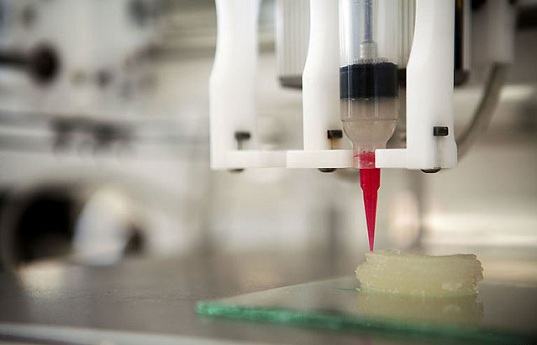Last week, we wrote an article about Foodini – a 3D printer for food – and how it’s poised to completely upset the natural order of the kitchen. It’s a technology that will not only have major implications for consumer food products, but also commercial and even home kitchens. In fact, we brought up the possibility that in the future 3D printed food could potentially render home kitchens completely obsolete.
And that’s a topic that’s really fascinating. So we decided to do a little more research into what’s currently available in the 3D printed food category, and do some speculation about what’s to come and how 3D printing will change the food industry – from restaurants to food manufacturers to our own kitchens at home.
Where Did It All Start?
Let’s start at the beginning. While 3D printing has gained a lot of attention lately, the technology has actually been around since 1984 and was based on a technique of creating an object through the building up of tiny layers. It’s called stereolithography and it was invented by a really smart guy named Charles Hull.
Using a curable resin and an ultraviolet laser, the technology uses a machine to trace a section of the pattern on the resin surface. The laser cures and solidifies the pattern and attaches it to the layer below. This process is repeated until the item is printed. 3D printed food works in much the same way, except you substitute a resin for a food compound.
What Can We Do With 3D Printed Food Now
Right now, 3D printed food is pretty limited. The technology allows you to print food, but not cook it. That provides a platform to make some pretty cool and intricate patterns and layouts, but doesn’t necessarily provide food that’s tasty.
Currently, the most obvious applications for 3D printed food are for people who need nutrient-rich food, but can’t digest full meals in their whole form. Think: a more innovative alternative to blended foods for the healthcare industry or creating your own food for small children who can’t yet eat whole foods.
Savannah Peterson, the Global Community Manager at Shapeways, thinks that of all the applications of 3D printing, 3D printing food is the least exciting. Aside from the practical applications like with healthcare and printing foods for military and rescue missions, which Peterson says is a great alternative, she’s not as keen on the idea of 3D printing for home and personal purposes. “It’s a really fun idea, but I don’t see it translating into [your] home kitchen. Will more technology make the food better? No, that’s just more processing. Instead of 3D printing the food we eat today, I think we’ll always find fresh better.”
It’s an interesting argument – do we take food processing to a new level or focus on whole foods? Will 3D printing ever be able to make food that’s as flavorful as using fresh ingredients? Does 3D printed food add a new layer of innovation and creativity to cooking, or does it take the fun out of cooking? We’ll have to keep an eye on the 3D food printing industry to find out.






this is very good info thank you